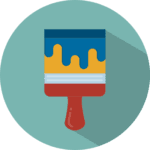
Pexels / Andrew Neel
Using different types of CTAs is the best way to reel in your target audience and improve your overall profits and conversions.
I’m a digital content specialist writing articles on sites like WP Experiment to share the best ways to increase online visibility and turn content into profits. Here, I tackle types of CTAs and how to use them effectively to your advantage.
Let’s start.
Contents
What is a CTA (call-to-action)?

Pexels / Gustavo Fring
CTA, also known as call-to-action, is a marketing strategy that can help entice your audience to click using concise and commanding verbs such as “watch now” or “read more.” These text files drive the audience’s attention and encourage them to click on that link by limiting their options and making the short snippet enticing enough to grab them by the hook.
Social sharing buttons or even newsletter subscriptions also function in the same light as this. You can take advantage of their clicks by sending emails with more call-to-action buttons, such as limited-run sales or almost out-of-stock announcements.
9 Useful Types of CTAs You Should Master And Use On Your Websites (Plus Examples!)

Pexels / Gustavo Fring
One of the best aspects of a marketing campaign, such as using call-to-action strategies on your website, is that it helps people click on a button to learn more about a particular topic. There are plenty of different types of CTAs that you can partake in to ensure that you can maximize the potential of each website visitor and make them go toward your desired action plan.
“Read More” or “Learn More” Button
Articles that discuss a particularly interesting topic can help readers feel compelled to continue digesting information. However, some of your audience might end up skimming through some of the more crucial information so they can skip ahead to a particular phrase or heading they are looking for.
Use “read more” or “learn more” CTA buttons as part of your call-to-action examples while limiting your written information to only the bare necessities. You must balance out the usage of this particular CTA button where some of the subject details are well-written, but there is still enough left out to force the website visitor to find out more.
Websites such as The Economist use this type of CTA marketing strategy to increase retention for their articles by limiting the free portion to the basic details unless the reader opts to use their free credits to press the “read more” button.
1. Social Sharing Buttons Types Of CTAs

Pexels / Torsten Dettlaff
In today’s modern world, we love to feel connected to the world around us. Whether you build an online reputation or like to talk to only your closest companions, communication and sharing drive people to learn about new things. This concept allows digital marketers to connect a social media-driven sharing system to help spread the word to anyone they want.
You can use well-known social icons, an in-line social sharing CTA button, or even a dedicated social shares sidebar to capitalize on the potential that someone will share what you wrote with others and continue to spread the word. Consider this CTA a nice way to determine better inbound marketing for your audience, as the people they choose to share your works with can help make it easier to adjust and even find your target audience demographics.
News sites such as Wall Street Journal or CNN would always leave an option to share the news to almost all social media sites to spread their influence to other readers, drastically improving their site visitor counts.
2. Newsletter Subscriptions

Pexels / Mikhail Nilov
Once your website attracts many audiences, you need to capitalize on long-term returns by ensuring they can receive any updated shifts or new products at a moment’s notice. Newsletter subscription CTA is a great use of a call to action example and can also help ensure that your web content attracts your subscribers to log in.
You can also add some personalization touches to the subscribed site visitor by handpicking a blog post that correlates to their previous search history on your website. Websites with fluctuating prices, such as a clothing site such as Forever21 or a games catalog like Steam, can help combine a different CTA by adding CTAs such as “buy now” when a particular wish list item is on discount, a great use for any company.
3. Demo or Free Trial

Pexels / Andrea Piacquadio
Selling a product or service can be challenging unless you prove its viability and necessity to your potential customer. Regardless of the use of clever wordplay or even multiple CTAs, customers still want to ensure that what you are selling is what they need. This sales funnel can drastically widen if you allow users to try out the product for themselves upfront.
A demo or free trial offer plastered on the start and end of your article or service helps entice the feeling of confidence in your product or service. The offer drastically boosts your potential customer’s outlook on your business as it is transparent enough to give them a shot without settling any payments.
Sites and services such as Netflix or various cloud storage software will have tons of demos or join free for a limited time promotions to get the audience to start investing.
4. Lead Generation Types Of CTAs

Pexels / George Milton
Lead generation functions best when paired with a properly placed call-to-action example that already garners high web traffic. Although every CTA’s main goal is to serve as a basis for lead generation, some specific generation CTAs are more attuned to increasing leads than others.
Social sharing buttons or even a “read more” segment thrown between your blog post can serve as a nice way to help ensure more connectivity with your site visitors than others. In addition, you can also help make large batches of information feel easier to digest with a nice break in between with your CTAs; consider it a two-pronged approach.
5. Lead Nurturing Types Of CTAs

Pexels / George Milton
Promotional materials are only as effective when they can have some value on offer. Some great lead nurturing action examples come from using free trials or guides for your audience to feel more valued than others. You can use this lead nurturing marketing tactic to cement your hook further and make your potential customers buy into what you are selling.
Popular service websites such as Google Drive have a large banner that indicates their new “try drive for work” button. This noticeable part of the website can help make the case known that it can help with lead nurturing by ensuring the audience that you can try the product out without any heavy requirements.
6. Event Promotion and Registration Types of CTAs

Unsplash / JJ Ying
Event promotion and registration is a smart CTA that functions similarly to using subscriptions to drive up web traffic. Any content that houses an event or a registration system can help to pad out more numbers on your website and secure a plethora of people interested in your upcoming virtual events. Websites such as Splash are great venues to host virtual events and track registration numbers.
Signing up for a particular event of yours would also mean leaving emails or other potential forms of communication that you and your viewers can use for better information dripping via a blog post. You can also add some further promotional details they are interested in to help retain long-term attention.
7. Purchase or Sales-focused CTA

Pexels / Anna Shvets
The more purchases you have for your website, the better chances you have at it steadily growing. Frequent pushbacks or dry spells can cause issues for any company, as sales would stumble or even halt. Using sales-focused CTAs such as the previously mentioned “related content” or “buy now” buttons can entice your customers to continue browsing in the hopes that it will increase purchases made at checkout.
These types of CTAs are more closely found in clothing or retail stores such as Nike or Gap. You can also find that these sites will throw in more discounts if you allow your email to receive newsletter information about upcoming sales or events.
8. Related Content

Unsplash / Austin Distel
The more new information or content you have with your viewers, the better chances you will garner their attention. Unfortunately, only some people will spend the time to learn about a new topic or check out more products if they already find what they need to look for. This abrupt stop at using your website can cause a drop in web traffic and potentially cause stagnant growth.
Using related content type CTAs can help bring out more recommendations to the viewers depending on the topic or keyword they are currently searching for. One great use of this action example comes with eCommerce websites such as Amazon that advertise a particular product; if there are no other products that come close to what you offer, then there is a high likelihood that the customer will purchase the item and then leave.
However, adding more recommendations based on their searches can help make a choice harder for them as they need to browse through different slightly similar products to make a decision, thus driving up web traffic and longevity towards your website.
Importance of Call-to-Action in Marketing

Pexels / Elina Fairytale
Creating a compelling primary CTA is all about understanding what your website is all about. If your web content prioritizes selling products or services, then adding information such as a “read more” CTA can drum up interest in the details of your goods. However, your use of CTAs would need to be bold but not overpowering not to divvy up the attention of your readers.
Generating constant web traffic and leads is a challenge all marketers will face, especially with contending industries adapting other call-to-action strategies against you. Use this opportunity to ensure that you know where your CTAs are heading and what you can offer your audience for maximum effectiveness on lead generation and lead nurturing.
How to Create an Effective Call-to-Action

Pexels / Gustavo Fring
Before you start utilizing every known CTA in the market, you must first consider which CTA will be more effective. The main goal of a call-to-action button is to drive up immediate interest from your site visitor and turn them into loyal potential customers. You can even use tactics such as combining fear of missing out on your audience if they do not take advantage of the offers you are currently presenting.
Some CTAs are more effective in informational blog posts rather than for product or service selling. Most blog posts will do what they can to leave their words to a more emotional ending to secure more clicks on their CTAs. Do note that you can always be creative with the wording you use on your CTAs to make it sound more appealing and enticing.
Fortunately, you can always mix and match from a wide range of CTAs to ensure your audience gets the point thoroughly. For example, you want to use a strong command verb to entice your potential customer to order from you immediately by placing a large “buy now” sign on your website.
Frequently Asked Questions

Pexels / ShotPot
Learning the types of CTAs and their uses can confuse some people, but once you understand the basic concepts behind each type, it gets easier to use them.
What type of CTA works?
The difference between a great and effective CTA to a useless one boils down to your usage. Use CTAs too sparingly, and you could miss out on some much-needed impact from your readers while having too many CTA buttons can drown the severity and impact that those buttons could otherwise have.
Learn to combine your CTAs with the type of website that you are currently running. If your site handles selling products, then make sure that certain CTAs, such as recommendations and buy now, are readily available to push the sale further. Take the time to figure out the kind of identity you want your site to have before flooding it with CTAs to prevent losing your standard to your audience.
How long should a call to action be?
A call to action can be as short or as long as you want. As long as you can get the message and importance across properly, you can be assured that the CTA will work as intended. Sometimes it takes patience and discovery to find the right formula that works for you, but it will be worth it once you see how much lead generation it can provide.
How do you know if the types of CTAs used are working well?
The main component that derives a CTA is clicks and retention. CTA marketing strategies such as a feedback form or subscription to your company’s newsletters can help count your growth. However, other forms of CTAs can also drive up other aspects, such as learning which of your demographics appeals the most to your business.
To put it simply, the more available information you receive from your CTAs, the more you will know that it is working well.
Can you have two or more CTA on your homepage?
Absolutely. The more CTAs you have, the better chances you will generate more leads and ensure you can entice your audience more. However, you must note that it does not start to hamper the overall user experience. Constant pop-ups to subscribe or buttons enticing people to start trying out a free demo can sometimes become too claustrophobic. Use CTAs wisely and sparingly for the best results.
Does every email need a CTA?
Yes, every email you send should have a call-to-action button ready at the start or end to persuade the reader to continue reading the topic you sent. Without any CTAs on your emails, your audience might end up not following through and forgetting about any promotional banners or new products you might have.
On the other hand, a CTA can serve as a portal that your readers can use to help them instantly continue what you wrote, drastically improving your chances of them either buying or subscribing to your services.
More Marketing Tips
Aside from knowing the types of CTAs, there are many other marketing strategies to use that enhance digital visibility. Read related articles to learn more about creating a surefire marketing plan that converts!
- Learn what USP stands for and why it’s essential for any online business.
- Read up on types of errors when performing A/B testing and how to avoid making costly mistakes.
- Dive deeper into what is a metric in Google Analytics so you can easily aggregate the data necessary to up your digital marketing game.
- Learn the ins and outs of what is cross-selling and take advantage of the benefits and elements.





